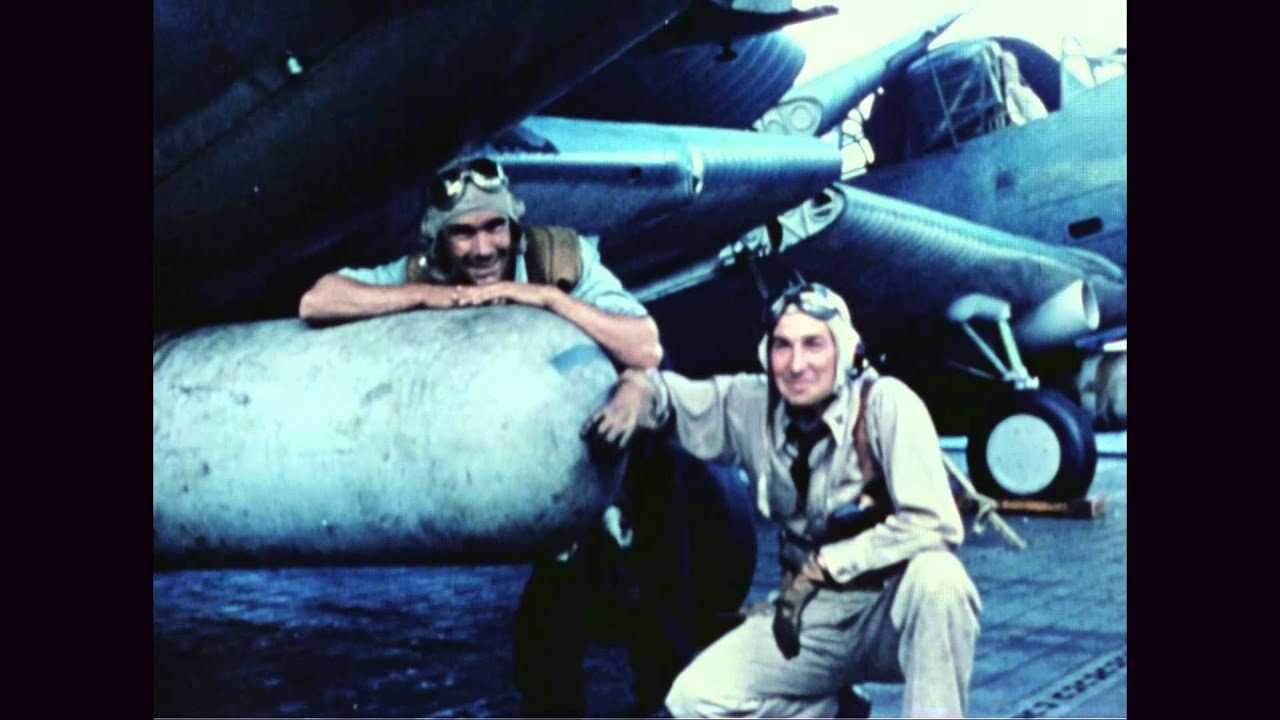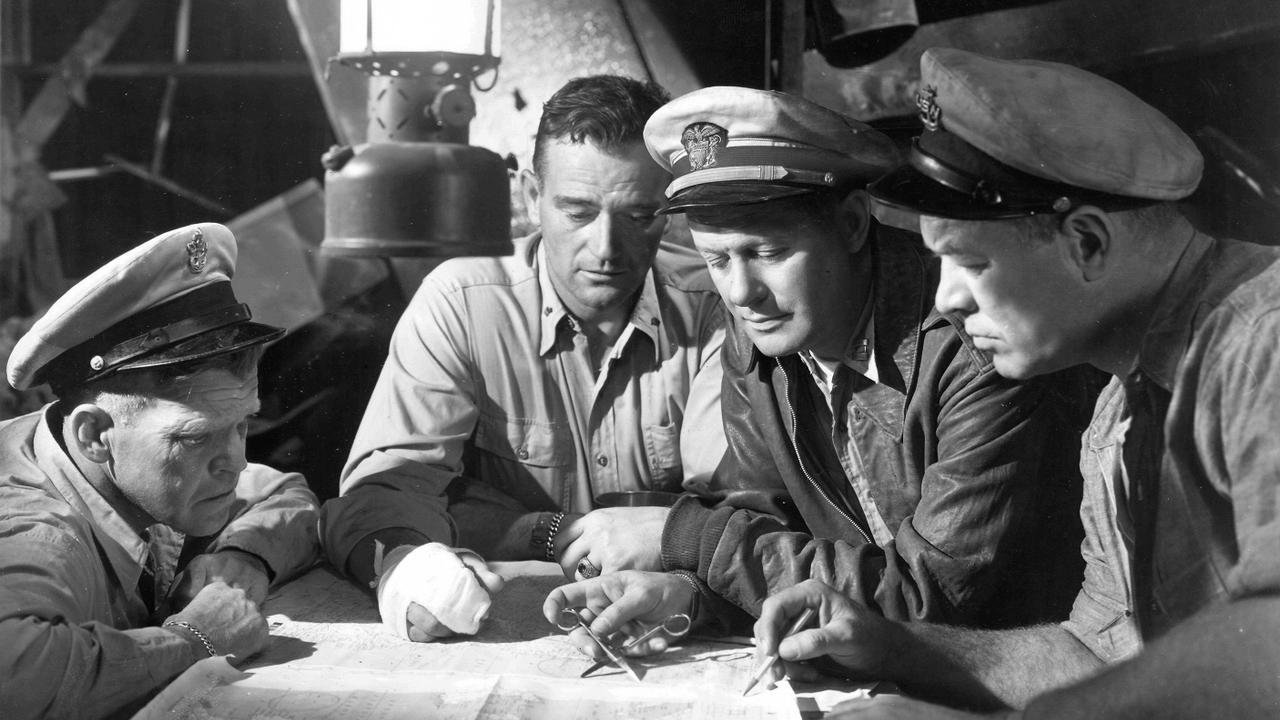JOHN FORD Chapter 5: The War Years
As part of our The Ford Fundamentals: John Ford Director of 2022 series, founder.programmer Craig Hammill is writing an appreciation in 12 chapters, a prologue, and an epilogue across the year.
Important Note: Movies will be talked about in depth so definitely spoilers!
CHAPTER 5: The War Years
Ford, like many of his Hollywood peers, felt compelled to be part of the World War II effort despite the fact he was in his late 40’s. The experience produced the amazing feature They Were Expendable and a number of documentaries including December 7th, The Battle of Midway, and Torpedo Squadron 8. Possibly the war’s biggest influence on Ford would be the increased complexity of his post war work.
The effect the war had on moviemakers like John Ford, Akira Kurosawa, Federico Fellini, Jimmy Stewart, Toshiro Mifune, Lee Marvin, Robert Mitchum, George Stevens, William Wyler, Frank Capra, Marlene Dietriech, and countless others who fought in it is clearly visible in the increased complexity, directness, ambivalence of all the cinema that came after. Not to mention the incredible wave of foreign talent that came to Hollywood to escape persecution: folks like Billy Wilder, Fritz Lang, Jean Renoir, etc.
John Ford himself embodies so many contradictions of the war years. And at the same time he also embodies what was best about the collective war effort.
In many ways, it was World War II which would eventually produce movies like My Darling Clementine, Fort Apache, The Searchers, and The Man Who Shot Liberty Valance.
Ford almost immediately enlisted to be part of the war effort after the bombing of Pearl Harbor. Interestingly, Ford had already smuggled in his anti-nazi, anti-fascist sentiment in movies like The Long Voyage Home which directly showed Hitler’s growing influence in Europe.
Ford was certainly ahead of the curve of many of his peers. He seemed to understand that we had to take a stand against fascism or it would eventually land here on our own shores. And he did.
Interestingly, Ford spent the majority of the war making movies for the OSS (the forerunner to what became the CIA). Movies we’ll never see that taught spies how to set up fake dummy businesses, sneak into countries, gather information, etc. Supposedly, Ford himself loved to play parts in these movies (often playing the salty spy who sets up the dummy corporation). It would be great to get our hands on them.
More importantly though, Ford really DID see combat and the toll of the war first hand. Almost all his movies after the war are haunted with an understanding of how one of war’s biggest casaulties are the generations of young who are roped into fighting on the front lines.
As with Ford’s cinema, Ford’s understanding and focus was always the human. Was always humanity. Was always humanism.
Ford helped film the D-Day Invasion, coordinated filming units all over both the Pacific and European theaters.
Of course the Old Man also had his ego and strove mightily to rise in rank and prestige during the War Years. It would be irresponsible not to point out that Ford very likely embellished many a story in pursuit of rank, recognition, and medal.
But in looking at Ford’s World War II work, one thing is striking: Ford retained, even deepened, his instinct for humanist poetry in everything he did.
Take for example the documentary December 7th he co-directed with ace Citizen Kane cinematographer Gregg Toland and which would go on to win an Oscar. The story goes that Ford originally had delegated almost all the shooting to Toland and others. The crew used the chance to shoot many re-created scenes, model battle sequences, etc. including strange sequences where Walter Huston playing Uncle Sam talks to Harry Davenport’s Mr. C-representing America’s conscience. The movie also took on an unsettling anti-Japanese tinge that, while somewhat understandable given that the Japanese had just killed 2000+ Americans in their bombing raid, reportedly made Ford uncomfortable.
So Ford stepped in and directed roughly half the movie. The result definitely feels of its moment in both good and complex ways. But what’s fascinating is the movie’s insistence on humanizing Hawaii’s Japanese population. On insisting repeatedly on their essential goodness.
This was not the STANDARD at the time. Disney and Warner Brothers cartoons famously had such outrageous racist cariacatures of the Japanese that they’ve since been banned or pulled. Much media and entertainment at the time portrayed the Japanese in awful light. And the US even interned the Japanese all along the west coast into camps.
But Ford’s December 7th while stating that there might have been some collaboration amongst Hawaii’s Japanese population with Japan herself (an assertion that might very well be factually true) spends the overwhelming amount of its time showing Japanese families, businesses, individuals, humanizing them, and explaining how incredibly complex the situation is.
Ford’s humanity and humanism is on even greater display in his 18 minute The Battle of Midway which he shot almost entirely himself with a 16mm camera.
On the island of Midway before the attack (due to good intelligence reports that an attack was coming), Ford grabbed the camera himself when the bombs finally started to drop and fllmed incredible scenes of the fight. The bombs were often so close that the film itself JUMPS in the camera.
Ford famously filmed a flag being raised in the middle of the battle with the narration “This really happened.”
The focus in The Battle of Midway is, not surprisingly, on the common soldier himself. There is a beautiful and poetic passage just before the attack where we see soldiers at sunset, silhouetted against a sky. The quiet before the storm.
One of Ford’s greatest moments, in this writer’s opinion, occurred decades later when Ford was interviewed about this documentary. He said something to the effect that he filmed it because he knew he (Ford) was a natural coward. And he needed to prove to himself that he could still face the war and what was going on.
For all of Ford’s barnacle level crustiness, for all his horrible behavior, Ford does seem at heart, someone who feels the need to be honest and candid and clear eyed when it counts.
Some of Ford’s fellow filmmakers had footage of a unit of flyers, Torpedo Squadron 8, who all (save one) died in the Battle of Midway. Ford edited an 8 minute tribute to these soldiers showing some of the last footage of them ever alive, posing by their planes, and paid simple but powerful tribute to them with their name and rank intercut with these images. The Old Man then had these movies shipped to each of the fallen soldier’s families.
Finally, towards the end of the war, Ford directed his only feature of the period, the incredible They Were Expendable (1945) about the real life soldiers, nurses, and people stationed in the Phillipines at the beginning of the war. It starred Robert Montgomery (himself a PTSD affected vet), John Wayne (who did not serve), Donna Reed among others.
They Were Expendable is that rare World War II movie of the time in that it deals with one of the US’s biggest and most devastating losses-the Battle of the Phillipines-in which the Japanese drove the Americans out, kiilled, and displaced a great many others.
But again, Ford doesn’t really focus on villanizing anyone. Instead he focuses on the day to day grit, resolve, and determination of the regular soldier. He also shows what a cost the war took on the young. There are incredible moments-like an early sequence where an underground hospital is bombed affecting the electricity that Ford simultaneously uses to show Wayne falling in love with Donna Reed-that show Ford lost none of his skill during his time away from feature moviemaking.
If anything, They Were Expendable acts as a prologue to the darker, even more poetic, character based, complex works of Ford’s post World War II years.
It’s also in They Were Expendable where we see Ford’s increasing focus on the importance of working within systems rather than trying to blow them up. Wayne’s character constantly wants to buck the chain of command and do his own thing. But Montgomery’s character repeatedly asks Wayne if Wayne is fighting for himself or if he feels a sense of responsibility towards the larger war effort and country itself.
This understanding of having to work within systems if systems are going to work would also be a focus of Ford’s. Ford never seemed to suggest that systems shouldn’t be examined and reformed (in fact, much of his late 50’s and 60’s work is actually devoted to just the opposite-an increased feeling that reform WAS necessary). But Ford did always believe in the American experiment.
And World War II seemed to deepen his commitment to it.
Who knows how any of us would behave if another war comes. Who knows if we’d be on the right side of it. Who knows if we’d have the courage to fight a fight that needed to be fought.
But Ford showed, through his example, that a commitment to democratic values must be backed up with action and engagement.
The times are always different. The context of World War II is certainly not the context of 2022.
But the difficulty and effort to fight a good fight remain the same. And the courage to admit to oneself that one might be a coward but has to transcend that to stand up for values worth fighting for is eternal.
Craig Hammill is the founder.programmer of Secret Movie Club.





